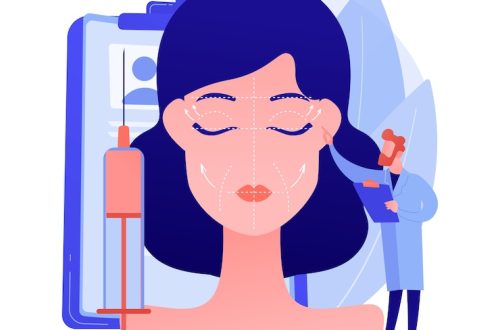
Post-Traumatic Stress Disorder (PTSD) is a serious mental health condition that affects millions of people around the world. While awareness about PTSD has grown, the stigma surrounding it still creates significant challenges for recovery. This stigma can prevent people from seeking help, delay treatment, and ultimately worsen mental health outcomes.
This article dives into the types of stigma associated with PTSD, how it affects recovery, and ways to overcome these obstacles.
Understanding PTSD and Its Impact
PTSD often develops after someone experiences or witnesses a distressing event, such as abuse, combat, natural disasters, or a serious accident. Common symptoms include intrusive thoughts, avoiding triggers, emotional numbness, and heightened awareness of surroundings. Even though effective treatments like therapy and medication exist, stigma often gets in the way of people accessing the care they need.
PTSD and Stigma: The Numbers
The National Institute of Mental Health (NIMH) reports that about 6% of U.S. adults will experience PTSD at some point in their lives. Despite this, stigma continues to deter those struggling from seeking help:
– A study in *Psychiatric Services* found that over 30% of people with PTSD avoid treatment due to fear of judgment or discrimination.
– Veterans, who are especially vulnerable to PTSD, report even higher levels of stigma—50% have concerns about being seen as weak, which leads them to avoid seeking treatment.
Three Types of Stigma Affecting PTSD
1. Public Stigma
This involves negative attitudes in society about people with PTSD, such as:
– The belief that those with PTSD are unstable or dangerous.
– Seeing PTSD as a personal weakness, rather than a legitimate medical condition.
– Assuming only military veterans experience PTSD while dismissing other trauma survivors.
2. Self-Stigma
Self-stigma happens when someone internalizes these societal attitudes, which can result in:
– Feelings of shame, guilt, or inadequacy.
– Reluctance to acknowledge symptoms or pursue help.
– Thinking they should just “get over it” on their own.
3. Structural Stigma
This form of stigma stems from broader systemic issues, including:
– Limited availability of mental health services in some areas.
– The high costs of therapy and medication.
– Workplace policies that don’t adequately support employees with PTSD.
How Stigma Hinders Recovery
Stigma creates obstacles at every stage of recovery, often leading to long-term negative impacts:
1. Delays in Diagnosis and Treatment
Many people fear being judged or discriminated against, which can prevent them from seeking professional help. This hesitation delays crucial early treatment, worsening symptoms over time.
2. Isolation
Public stigma may lead people to withdraw from social connections, fearing rejection or misunderstanding. Self-stigma can intensify loneliness and make it harder to form supportive relationships.
3. Worsened Mental Health
Internalized stigma often exacerbates PTSD symptoms, such as depression or anxiety. Additionally, the stress of hiding symptoms can lead to emotional exhaustion.
4. Workplace Challenges
Misconceptions about PTSD sometimes cause employers to overlook qualified candidates or avoid providing necessary accommodations. Fear of discrimination also discourages employees from disclosing their condition.
Ways to Break the Cycle of Stigma
Reducing stigma surrounding PTSD requires education, advocacy, and systemic change. Here are some key strategies:
1. Raising Awareness
Public awareness campaigns can challenge harmful stereotypes and increase understanding of PTSD as a treatable condition. Sharing personal recovery stories can help others feel less alone and more encouraged to seek help.
2. Encouraging Open Conversations
Safe spaces for discussing mental health can reduce feelings of shame and normalize seeking support. Schools, workplaces, and community programs can play a role in fostering these discussions.
3. Making Treatment Accessible
Governments and organizations must invest in affordable and accessible mental health services. Expanding telehealth options is another way to bridge care gaps, especially in underserved areas.
4. Building Peer Support Networks
Support groups allow individuals with PTSD to connect with others who truly understand their experiences. These networks often bridge the gap to professional treatment and reduce feelings of isolation.
5. Addressing Self-Stigma
Therapy, especially Cognitive Behavioral Therapy (CBT), can help individuals combat their own negative beliefs and build self-compassion. Learning about the biological roots of PTSD can also reduce misplaced guilt or feelings of personal failure.
6. Promoting Inclusive Workplaces
Employers can establish supportive policies, such as flexible schedules or accommodations, for employees dealing with PTSD. Training managers to recognize the challenges of PTSD can help foster a more inclusive and empathetic work environment.
Media’s Role in Reducing PTSD Stigma
Media has the power to shape public perceptions of PTSD. Positive, accurate portrayals can challenge myths and raise awareness, while sensationalized or harmful representations can perpetuate stigma. Content creators can make a difference by:
– Consulting experts and individuals who have personal experience with PTSD.
– Highlighting stories of resilience and recovery.
– Avoiding dramatic portrayals or using PTSD purely as a plot device.
Final Thoughts
The stigma around PTSD remains a significant obstacle to recovery, but it’s not an insurmountable challenge. By raising awareness, fostering empathy, and addressing systemic issues, we can create a world where people with PTSD feel safe, supported, and encouraged to seek help.
Whether you’re someone living with PTSD or an ally, remember that understanding and kindness go a long way in breaking the cycle of stigma and promoting healing.




